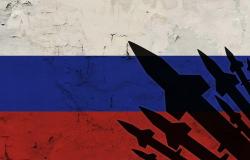Svalbardthe remote arctic island of Norwaywitnessed a rare celestial phenomenon: a polar rain aurora that illuminated the sky with a uniform green blanket. According to the study that was published in Science Advances
Normally, the northern lights show thin, undulating structures in the sky, but the polar shower aurora observed in Svalbard It was characterized by a uniform and diffuse distribution. “This aurora had a very soft shape and the structure is just a diffuse patch of greenish matter. It was like a big greenish cake.”he explained Keisuke Hosokawaa space physicist at the Tokyo University of Electrocommunications in Japan, who led the study.
This phenomenon occurred one morning of a December 25, 2022 but just now confirmed, It was caused directly by electrons from the solar wind. Under normal conditions, the solar winds They contain various high-energy particles that, when they reach Earth, are not enough to create visible auroras. However, when trapped and accelerated by the Earth’s magnetic field, they interact with the atoms of our atmosphere and produce the known auroras. Generally, these lights occur around the poles and rarely over the polar caps themselves.
David Knudsena physicist at the University of Calgary in Canada, highlighted the unusual nature of this event: “This is a fascinating counterexample in which a polar cap appears to be filled with electrons arriving directly from the solar corona”. This event occurred in an extraordinary period of almost 28 hours without solar wind, something that Hosokawa described it as an experience like “once every 20 years.”
The discovery of this aurora began accidentally. Hosokawa revealed that, during a routine weekly review of aurora cameras, he chanced upon an accumulation of data showing this aurora. “A late Christmas gift“, he described Hosokawawho then verified satellite data taken simultaneously to ensure the authenticity of this phenomenon, which confirmed the characteristic signature of a polar shower aurora.
Until now, auroras of this type had only been observed by satellites. They had never been captured from Earthproviding a new perspective to study how solar electrons interact directly with the Earth’s atmosphere. Larry Paxtonan astrophysicist at the John Hopkins Applied Physics Laboratory in Baltimore, Maryland, stressed the importance of the discovery: “The really exciting aspect of this paper is that it shows that there are still fundamental discoveries to be made.”.
Capturing this phenomenon both from space and from Earth is crucial to understanding the relationship between solar electrons and their impact on Earth. This specific event, which occurred between December 25 and 26, 2022, offered a spectacular view, but also provided a unique opportunity to advance research into solar-terrestrial interactions and the specific conditions that cause polar shower auroras.
Analysis of this data allows scientists to improve their understanding of the interactions between the solar wind and the Earth’s magnetic field, as well as the dynamics that generate these types of auroras. The challenging discovery of the polar shower aurora in Svalbard opens a new window for future research and discoveries in space physics and atmospheric sciences.
Documentation of this event in the magazine Science Advances promises to be a valuable resource for other researchers in the field, offering new keys to deciphering the complex relationship between our star and Earth’s atmosphere. It is remarkable how events like this, observed for the first time from Earth, can provide data and perspectives that were previously only accessible through satellite observation.
The polar shower aurora captured in Svalbard not only represents an extraordinary visual spectacle, but also highlights the ability of science to discover and understand rare and impressive natural phenomena. With this new information, scientists hope to continue unraveling the mysteries of the universe and the ongoing interaction between the sun and the planet.






